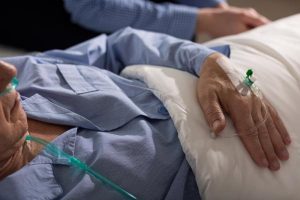- Home
- Editorial
- News
- Practice Guidelines
- Anesthesiology Guidelines
- Cancer Guidelines
- Cardiac Sciences Guidelines
- Critical Care Guidelines
- Dentistry Guidelines
- Dermatology Guidelines
- Diabetes and Endo Guidelines
- Diagnostics Guidelines
- ENT Guidelines
- Featured Practice Guidelines
- Gastroenterology Guidelines
- Geriatrics Guidelines
- Medicine Guidelines
- Nephrology Guidelines
- Neurosciences Guidelines
- Obs and Gynae Guidelines
- Ophthalmology Guidelines
- Orthopaedics Guidelines
- Paediatrics Guidelines
- Psychiatry Guidelines
- Pulmonology Guidelines
- Radiology Guidelines
- Surgery Guidelines
- Urology Guidelines
Early measurements of lactate in sepsis patients associated with improved outcomes

- administration of early IV antibiotics
- obtaining blood culture
- measuring lactate levels in the blood somewhere between six hours before and three hours after evidence of sepsis
The first two requirements are well established, however, there is a lack of evidence for the third required action. One systematic review of the SEP-1 bundle, for example, concluded that "no credible evidence supports a beneficial effect on survival of mandated use [of lactate levels] for all septic patients.
Once these lactate measurements were mandated, "we felt that the potential impact of this recommendation on our patients deserved a closer look," said Dr. Churpek.
According to the authors, septic patients who develop high lactate levels would benefit from urgent therapies, such as antibiotics. But they worried that the SEP-1 bundle could greatly increase the number of lactates checked on patients and that the association between delays in initial lactate measurement and mortality "had not been adequately examined," Churpek said.
"Sepsis continues to be a major public health problem in the US, one with persistently high mortality despite continued efforts to improve care," said co-author Xuan Han, a pulmonary critical care fellow at the University of Chicago Medicine. "Our goal was to understand, on a more granular level, how sepsis bundles affect the patients we apply them to."
For the study, the researchers decided to look back at thousands of sepsis cases diagnosed and cared for at the hospital. They combed through medical records from October 2008 to January 2016 looking for cases of sepsis treated in the seven years prior to SEP-1.
The researchers examined the charts of 5,762 patients who had been admitted to the hospital and met SEP-1 criteria for severe sepsis, as defined by a combination of two out of four systemic inflammatory response syndrome (SIRS) criteria, organ dysfunction and clinical suspicion for infection based on blood-culture orders.
Forty-seven percent of these patients (2,697) entered the hospital through the emergency room, 27 percent (1,575) developed sepsis in an intensive care unit and 26 percent (1,490) were cared for on the wards.
Next, they looked for differences between sepsis patients who met a key SEP-1 criterion--timely serum lactate levels during the designated time frame--and those who did not. Overall, 60 percent of patients had an initial lactate draw within the specified time window. Forty-one percent of those patients had normal lactate levels, defined as less than or equal to 2 millimoles per liter. The other 40 percent of patients did not have their lactates measured during the time window established by SEP-1.
Key Findings:
- Patients who presented with severe sepsis in the emergency department were most likely to receive a timely lactate test; 79 percent of emergency room patients were tested within the recommended time frame, these patients had the lowest mortality (18%) of any group of sepsis-related patients.
- Patients on the wards who developed severe sepsis had the lowest rate of timely lactate measurements; only 32 percent were tested within the recommended time.
- Many patients who did not receive timely lactate measurements also experienced delayed IV-fluid administration and antibiotic treatment--one of the few well-tested interventions that improve survival in sepsis.
- Patients with delayed lactate measurements demonstrated the highest in-hospital mortality at 29%, with increased time to antibiotic administration (median time, 3.9 vs 2.0 h).
- Patients with initial lactates > 2.0 mmol/L demonstrated an increase in the odds of death with an hourly delay in lactate measurement.
- There was an associated increase in mortality, about two percent for each hour of delay, in patients with an abnormal lactate value.
- It took nearly twice as long for those patients to receive antibiotics, and more than three times as long for them to receive needed fluids, compared to patients who had lactates drawn within the SEP-1 window.
"Delays in lactate measurement are associated with delayed antibiotics and increased mortality in patients with initial intermediate or elevated lactate levels. Systematic early lactate measurement for all patients with sepsis will lead to a significant increase in lactate draws that may prompt more rapid physician intervention for patients with abnormal initial values," concluded the authors.

Disclaimer: This site is primarily intended for healthcare professionals. Any content/information on this website does not replace the advice of medical and/or health professionals and should not be construed as medical/diagnostic advice/endorsement or prescription. Use of this site is subject to our terms of use, privacy policy, advertisement policy. © 2020 Minerva Medical Treatment Pvt Ltd